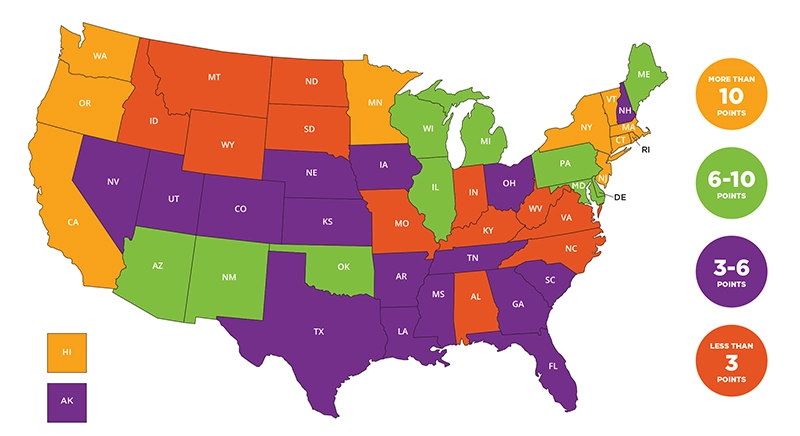While there’s no official census of amputee caregivers, this population surely numbers in the hundreds of thousands. They belong to the larger cohort of approximately 26 million Americans who serve as unpaid caregivers to family members or friends—a number that rises each year as the nation’s population ages.
People who serve in caregiver roles often give up significant amounts of time, income, and other resources. The primary federal benefit available to offset those sacrifices is the Family and Medical Leave Act (FMLA), which guarantees 12 weeks per year of unpaid work leave to employees for health-related needs, including caregiving. Recognizing the need to strengthen the nation’s caregiver support infrastructure, the National Academy of Medicine (NAM) submitted a report to Congress two years ago listing 26 recommendations for policy reform.
For the time being, however, benefits for unpaid family caregivers are largely determined at the state level, and the states vary widely in the amount and extent of assistance they make available. None offer the level of services recommended by NAM.
“Although the landscape of state policies supporting caregivers has improved over time, benefit restrictions [in most states] hinder accessibility for all family caregivers,” noted a recent paper published in the Milbank Quarterly. Titled “The Landscape of State Policies Supporting Caregivers,” the study included a state-by-state catalog of the policies that are (or are not) in place to ease family caregivers’ burdens.

The most common state-level benefits involved in their analysis are:
- Extended unpaid leave beyond the FMLA mandate of 12 weeks
- Assessment and training resources for family caregivers
- Paid family leave for caregivers
- Paid sick days or flexible sick days
- Tax credits or deductions for caregiver-related expenses
- Unemployment insurance for caregiver-related job interruptions
How well does your state support family caregivers? Below we’ve reproduced the Milbank Quarterly’s ranking of the 50 states.
Find your state in the color-coded map, then use the key to see how it compares with other states. Point totals are based not only on which services are offered but also the extent of each benefit (for example, two weeks of paid leave gets a higher score than one week).
For a detailed list of your state’s specific caregiver support policies and score, see our newsletter article from earlier this year.




